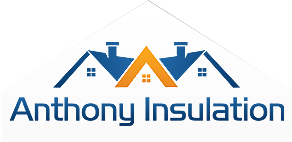How Much Attic Insulation Do You Need?
One of the best ways to save energy on heating and cooling is to ensure that your attic has adequate insulation. But how much is “adequate”? It will depend on the thickness of the insulation, and will vary from one material to another. R-value plays the key role in how effectively your insulation works, and materials with higher R-value will require lower thickness. In this guide, you will get some valuable info about how much attic insulation is required for your home.
Importance of R-value
R-value of insulation materials can range between 2.0 and 8.0. The higher is the value, the more effective will be the insulation. Sprayed foam is considered as one of the best options for insulation, as it can have R-value as high as 8.0. On the other hand, cellulose and fiberglass can have the value between 2.9 and 3.8. This is the reason why more and more homeowners are increasingly replacing old insulation with spray foam.
The government recommends that attics should have at least 38 as the minimum R-value. This comes to around 12 inches of cellulose or fiberglass insulation.
Factors to Consider
R-value is a measure of the capacity of a material for resisting heat flow. The insulation required for your home will depend on the following 2 factors:
- The Location – Your attic will need insulation with higher R-value if you are living in the north. The required R-value will keep decreasing as you move towards the south.
- How Old is your Home – An older home will have materials with more flaws in terms of insulative capacity. Therefore, you will need more amount of insulation for an older home than for a newer one. As a standard, 10 years is taken as a measure for determining the difference between old and newer homes (in the context of insulation). So if you have a house older than 10 years, you will need more insulation.
General Evaluation of Insulation
If your attic already has insulation, you must use un-faced insulation. The batts/rolls must be laid down at right angles to the joists. But if there is no old insulation, it is better to use faced insulation. It must be placed between the joists and the paper side must face towards the living space.
An easy way to determine if you need more insulation is to look at the attic. The insulation shouldn’t be below or at level with the floor joists. If it is then you must add more of it. Almost anyone can check it. If the joists are visible, you must seek professional help in adding more insulation. On the other hand, if the floor joists are not visible, you already have enough insulation.
It is however essential that insulation should be distributed evenly. It is a commonly seen problem that there is adequate insulation along the middle but lesser along corners. Again, if the joists are covered and the insulation is spread evenly, there is no need for adding more. You could check this yourself or get a professional service to conduct an inspection. Usually, reputed attic insulation companies in Calgary will provide a free evaluation.
So keep these factors and points in mind when checking the attic insulation. If you are not sure of the current amount of insulation, it will be best to call a professional service for free evaluation. They will provide a detailed report of your attic’s insulative capacity and any flaws that need to be fixed. You could then determine whether you need to upgrade or add your insulation or not.


